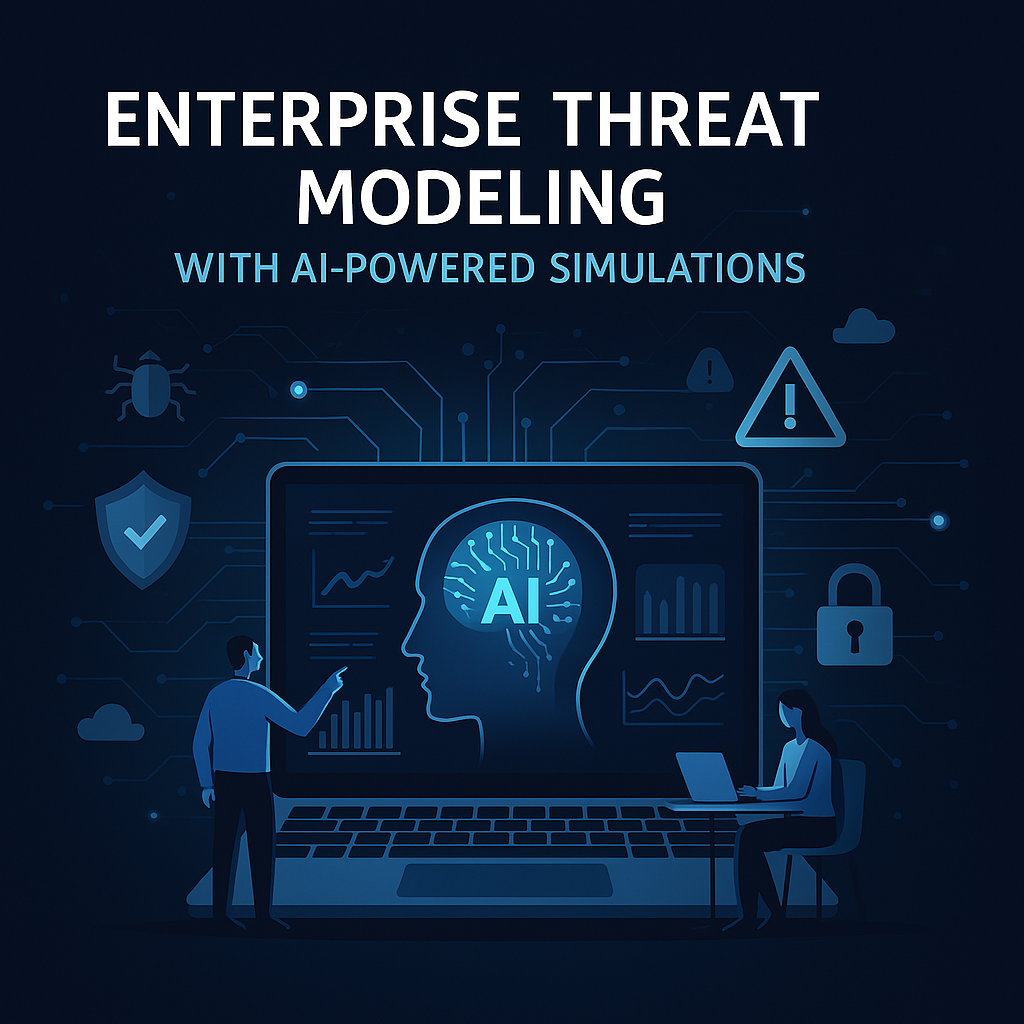
In today’s digital-first world, enterprises are managing sprawling IT environments that span hybrid clouds, microservices, APIs, and remote workforces, all while trying to stay ahead of an increasingly sophisticated and automated wave of cyber threats. Traditional approaches to threat modelling, typically static, manual, and reactive, are no longer sufficient to protect modern infrastructure. To meet the moment, organisations are turning to AI-powered simulations to rethink how they anticipate and defend against attacks.
The Limits of Traditional Threat Modelling
Conventional threat modelling relies heavily on predefined diagrams, checklists, and periodic risk assessments. These methods often suffer from key limitations:
- Static and infrequent: Threat models are typically created at the design phase and rarely updated.
- Subjective inputs: Assessments rely on human expertise, which varies across teams.
- Siloed execution: Models often fail to incorporate real-time data from live systems.
As a result, many enterprises struggle to keep their threat modelling efforts aligned with the real-world complexity of their systems, especially in environments with continuous deployment and constant change.
Enter AI-Powered Simulations
AI-powered threat modelling introduces a dynamic, data-driven layer to security analysis. These systems use machine learning, natural language processing, and graph-based analytics to ingest:
- Real-time infrastructure data
- Application and user behaviour logs
- Known threat intelligence feeds (e.g., MITRE ATT&CK framework)
- Network flow information and access logs
From there, AI creates live digital twins of your environment, virtual replicas that simulate how systems interact and what might happen if specific assets were compromised.
Key Benefits of AI-Driven Simulations
1. Dynamic Modelling at Scale
Instead of relying on static documentation, AI-driven simulations continuously update models based on the latest data. Whether you’re onboarding a new SaaS vendor, launching an app update, or scaling infrastructure, the threat model adjusts in real-time.
2. Predictive Threat Scenarios
By referencing attacker TTPs from global threat intelligence, AI can simulate how an adversary might move laterally across your environment—identifying critical attack paths and choke points that may not be obvious to human analysts.
3. Prioritised, Actionable Mitigation
Rather than overwhelming teams with long lists of vulnerabilities, AI tools assign risk scores based on business impact and exploitability. This enables prioritisation of high-risk issues that matter most to the organisation.
4. Alignment Between Security and Business
AI-powered modeling can produce executive-level visualisations of potential breaches—making it easier to communicate risks to non-technical stakeholders and justify investments in specific controls or architecture changes.
5. Empowering DevSecOps
In CI/CD environments, these simulations integrate with developer workflows, offering early warnings on misconfigurations, insecure dependencies, or risky design choices before they reach production.
Use Cases in Enterprise Environments
- Hybrid cloud architecture reviews
- Zero trust policy testing
- M&A cybersecurity due diligence
- Incident response planning
- Regulatory compliance validation
For instance, financial institutions can simulate how a misconfigured API might be exploited in a credential stuffing attack. Healthcare companies can test ransomware scenarios involving unsegmented IoT devices. Government agencies can model nation-state tactics targeting supply chain software.
Getting Started: Best Practices
- Start with a high-value application or environment: Focus AI modelling efforts on areas where downtime or breaches would have major consequences.
- Feed the right data: Integrate logs, telemetry, asset inventories, and access policies into your modelling tool.
- Validate outputs with red/blue teams: Combine simulation with real-world attack testing to ensure accuracy.
- Collaborate across teams: Use visual threat paths to bring security, operations, and leadership into the same conversation.
- Continuously update: Treat threat modeling as a living process—not a one-off checklist.
The Road Ahead
AI-powered simulations mark a significant evolution in enterprise cybersecurity strategy. Rather than reactively chasing alerts, organisations can now proactively stress-test their defences, understand how threats could unfold, and take preemptive action. As the complexity of IT environments and threats continues to grow, this intelligent, scalable approach to threat modelling will become essential, not optional.
By shifting from static documentation to real-time simulation, enterprises are not only enhancing their technical defences but also cultivating a culture of foresight, resilience, and agility.

Leave a Reply